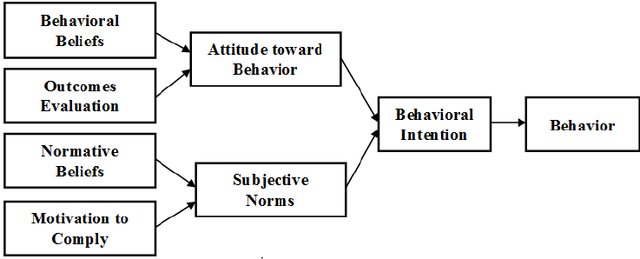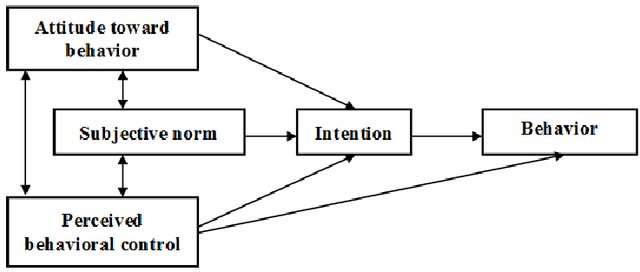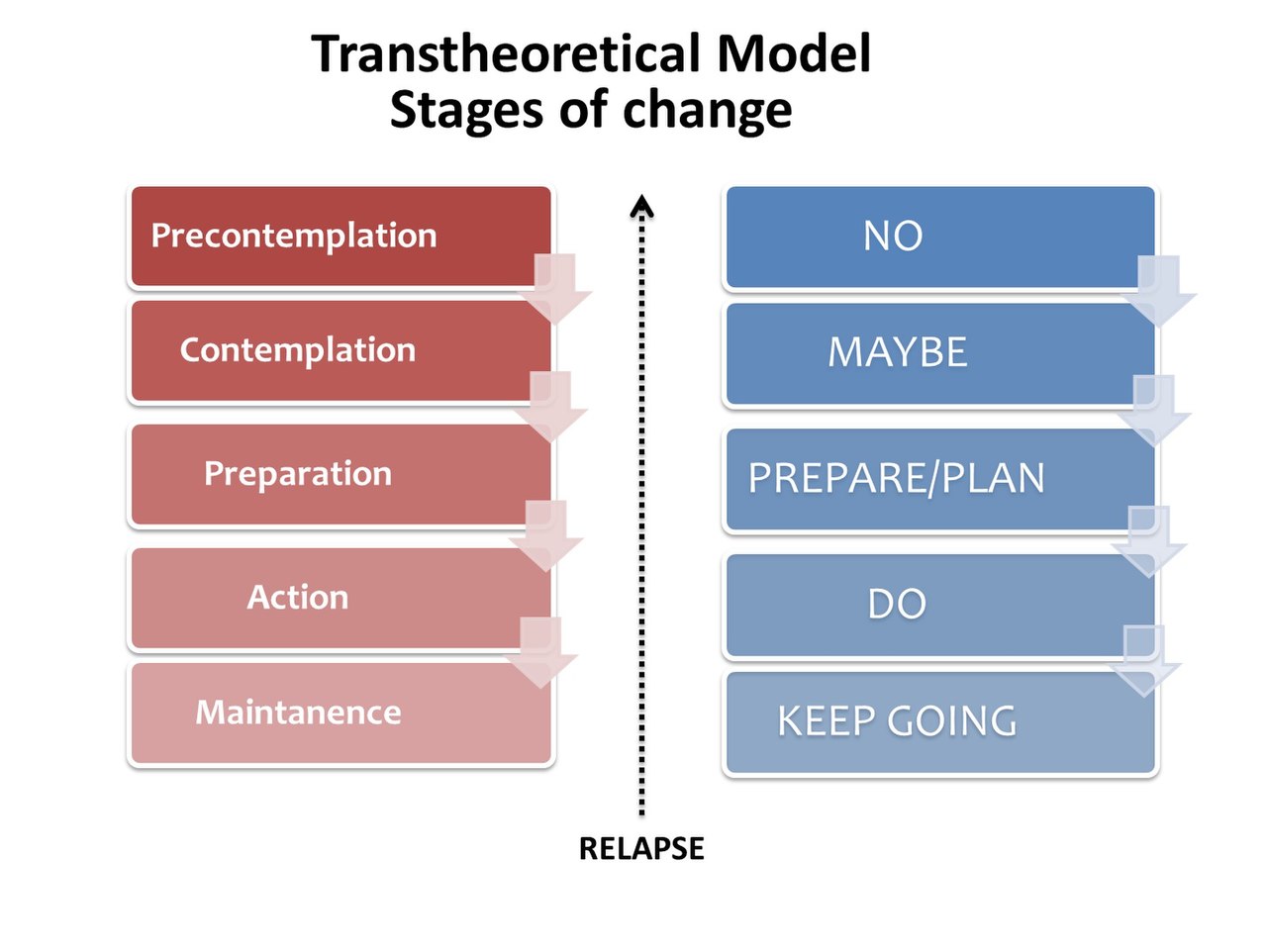Contents
Introduction
The shift from ideas to behaviors constitutes a sensitive and socially beneficial issue, particularly in the area of public health, including prevention. There is a tendency for individuals to resist attempts at awareness, prevention, or persuasion. As a matter of fact, it is in our nature to experiment and to learn about life as we progress. They may reinforce certain behaviors in a very positive way, and neglect others that are more protective since they may consider them to be more costly. Each of us can think of examples of behaviors that would improve our health, such as engaging in regular physical activity.
Although perceived on a long-term basis, these benefits can bring about positive changes. Therefore, we are entering into models that have been extensively studied in the psychology field concerning the barriers and facilitators of engaging in healthy behaviors (e.g., not smoking, practicing regular physical activity, eating a balanced diet, and sleeping sufficient amounts).
The first part of this article will discuss the origins of these models in psychology and describe the determinants of behavior change. It will discuss the brakes and levers that allow a given behavior to be achieved, for example. The next step in our discussion will be to examine the types of models and how they work. Lastly, we will examine a concrete application of these models on a contextual theme: the environment.
Basics of psychology
This article was written based on a study of theories of behavior change. Through timeNough, users become aware that their behavior at work can directly impact their health and possibly result in burnout. The prevention of burnout can be achieved through implementing behaviors to avoid chronic stressful situations, since stress is one of the main factors influencing burnout.
These behavioral theories are primarily based on psychological principles. In the last 50 years, a number of theories and models have been developed in an attempt to explain how people change their behavior. In addition, these models also identify the main determinants that contribute to this change. There has been considerable interest among social psychologists and psychologists in exploring the factors that motivate people to change their behavior. In this way, we can already observe the emergence of self-determination-based theories.
Self-determination is derived from theories of motivation and personality. As a result, it allows humans to develop and fulfill their psychological needs. Motivation influences the choice of actions in an internal or external context. In other words, our actions depend on our personal decisions to change, or the environment (external constraints) that are perceived. Self-determination theory emerged in response to studies conducted on intrinsic motivation (pleasure, values, and benefits) resulting from the realization of an action, which provides satisfaction as opposed to extrinsic motivation (environmental constraints, or external factors). According to Deci in 19751, self-determination is based on three psychological concepts: autonomy, competence, and social belonging.
Many individuals wish to change a behavior (e.g., stop smoking) but do not maintain that behavior after a few days, weeks, months or even years. The behavior change must be maintained in order to be considered successful, and maintaining a behavior change requires a considerable amount of time, energy, and effort. However, it is now widely recognized that the initiation (or intention) of behavioral change is one of the most critical steps. During this stage, there must be a significant degree of volition (wanting to make a change). The most significant barriers to behavior change are inertia and indifference, which are reinforced by lifestyle habits.
Theories of behavior change have been developed based on the determinants or predictors of behavior change. These studies date back to the early 20th century, echoing research in social psychology on the interrelationship between attitudes and behaviors. Ajzen & Fishbein (1977)2 proposed that attitudes could explain whether a particular action is performed. Consequently, we will see the emergence of a first conceptual framework for describing a change in behavior (1967, 1980).
Psychology models of behaviour change
The theory of reasoned action (1967, 1980)
In this model, Fishbein and Ajzen believe that humans act rationally and logically. In addition, Ajzen & Fishbein (1980)3 explain that people take into account the consequences of their actions before engaging in a specific behavior. As a result, Fishbein and Ajzen believe that they can predict behavior. In their Theory of Reasoned Action, they suggest that behavior is more closely associated with behavioral intentions than with attitudes. An attitude toward behavior (positive or negative perception of future behavior) interacts with subjective norms (perceived social pressure) in order to predict the behavioral intention that predicts behavior. Behavioral beliefs and outcome evaluations contribute to attitude toward behavior. According to the theory of self-determination, subjective norms are determined by normative beliefs and motivations to comply.
The first model represents a first step in studying behavior change, whereas the second model proposed by Fishbein and Ajzen aims to enrich the first theory by incorporating perceived behavioral control.
The theory of planned behavior (1991)
Unlike the first model, this second model is an evolution of the first, since Ajzen and Fishbein realized the first did not adequately explain behavior. In this way, they added a third element of behavioral prediction to their model of reasoned action: perceived behavioral control. In addition, this model still assumes that the action or behavior is predicted by the intention to perform it. Individuals perceive behavioral control as their belief that adopting a particular behavior will be easy or difficult.
According to McCormack Brown (1999)4, this element is intended to counterbalance situations in which people have very limited control over their behavior and attitudes. In contrast to the former model, perceived behavioral control not only predicts intentions but also directly influences behavior. Thus, the main idea behind this proposed theory could be summarized as follows: individuals will not develop a strong intention to act and behave in a certain way if they believe they do not have the necessary resources or opportunities to do so.
Regardless of their positive attitudes and whether their entourage approves of their behavior (subjective norm). In other words, the decision to engage in a behavior is seen as reasoned, planned and controlled. However, just because a decision is reasoned does not mean that it is rational or that it is grounded in objective and logical rules. However, a person should consider the benefits and consequences of each behavior before engaging in it.
The Transtheoretical Model (1979)
Prochaska and DiClemente have proposed an innovative model for describing the process of behavior change. The fact that they had studied the process of behavior change and examined the large number of theories on behavior change, prompted Prochaska to review these theories. Thus, these investigations led to the development of the Transtheoretical Model of Change, also known as the Stages of Change Model.
According to Prochaska and DiClemente (1982)5, behavior change occurs in a sequence of stages that are sequentially organized in a manner similar to child development by stage as pioneers of developmental psychology like Piaget, Freud or Wallon observed. According to Prochaska and DiClemente (1982)5, the process can be divided into five phases: precontemplation, contemplation, preparation, action, and maintenance. The five stages lead to a final “stage” in which individuals may either relapse (reverting to their previous behavior) or terminate (not being tempted to return to their old habits).
People change their behavior gradually according to the stages of change theory, and different interventions are appropriate at various stages.
The following stages have been identified:
– In the precontemplation stage, subjects do not intend to change their high-risk health behaviors in the near future, i.e., within the next 6 months, since people generally do not consider changing their behavior more than 6 months in advance.
– Contemplation refers to the point at which people are seriously considering changing their behavior in the next 6 months. It is estimated that, despite their intentions, subjects remain in this relatively stable stage for at least 2 years.
– During the preparation stage, individuals are planning to take action quickly, usually within a month. The majority of them make a plan of action and have already taken some initiatives in the past year or have already changed some aspects of their behavior.
– Action refers to a reported change in behavior in the last 6 months. In this stage (the least stable), subjects are most likely to relapse into their previous behavior.
– The maintenance stage occurs after the goal has been achieved and lasts for at least 6 months until there is no longer any risk of relapse.
As previously mentioned, the final stage is referred to as termination. In this stage, the subject is no longer tempted to return to his or her previous behavior, and self-efficacy is 100% in all situations that previously presented a temptation.
A relapse occurs when an individual initiates a behavior (e.g., quit smoking), before resuming the previous behavior (e.g., smoking). The process of achieving long-term behavior change often requires the support of loved ones, such as family members, friends, or health care professionals, or some other form of motivation or inspiration.
The stages are separated by different processes of change, which represent all forms of activity undertaken in order to help change our thoughts, feelings, and behaviors. There are 10 of these processes of change, which refer to the different mechanisms that people use to modify their behaviors. These processes are:
- Awareness: (Get the facts) – increasing awareness of healthy behaviors through information, education, and personal feedback.
- Dramatic relief: (Pay attention to the feelings) – feeling fear, anxiety or worry about the unhealthy behavior, or feeling inspiration and hope by hearing about how people are able to change to healthy behaviors.
- Self-assessment (Creating a new self-image) – realizing that healthy behavior is an extremely necessary part of who they want to be.
- Environmental Reassessment (Notice your effect on others) – realize how their unhealthy behavior affects others and how they could have more positive effects by changing.
- Social Liberation (Notice the public support) – realize that society supports healthy behavior.
- Personal liberation (commit) – believing in one’s ability to change and committing and recommitting to act on that belief.
- Helping Relationships (Getting Support) – finding people who support one’s change.
- Counterconditioning (Use substitutes) – analyzing the advantages and disadvantages of change and finding alternatives.
- Use rewards – increasing rewards for positive behavior and reducing rewards for negative behavior.
- Stimulus control (Manage environment) – avoid situations with high risk of relapse or misbehavior.
Application and examples
Next, we will take a closer look at the application of a behavior change model based on examples at each step. In order to illustrate our remarks. We will utilize Ajzen’s (1991) model.
Please be reminded that this model views the decision to engage in the behavior as a reasoned, planned and controlled one.
Attitudes
Accordingly, attitudes indicate the degree to which commitment to a behavior is viewed positively or negatively by an individual.
As an example, a person may have a positive attitude toward sorting but a negative attitude toward composting at home. Attitudes are determined by perceptions of the potential costs and benefits of a behavior, and by the degree to which it is regarded as meaningful. Composting at home may appear inconvenient and require a significant amount of time and maintenance, but they regard the convenience factor as very significant. It is possible, however, that individuals may believe that making compost is useful and environmentally friendly, but attribute less importance to these factors. Consequently, this person would have a negative attitude towards composting because he or she would consider the negative factors to be more important than the positive factors.
Subjective norms
Subjective norms refer to how people or groups perceive the individual’s behavior. In other words, it is the social pressure that is perceived by the individual. Costs/benefits in this case are evaluated on a social basis. The subjective norm is based on the individual’s perceptions of what is expected by relevant reference groups (e.g., friends, family, neighbors). Motivation to comply, i.e., the willingness of the individual to meet or not meet these expectations, moderates this effect.
It is possible that a person’s spouse views composting as very positive and expects her to do it (assuming the person values her spouse’s opinion highly). While his friends may consider composting impractical and discourage him from doing so (but he places less value on their opinion and is therefore less motivated to meet their expectations). As a result, this individual will have a subjective norm in favor of composting.
Perceived behavioral control
Perceived behavioral control refers to an individual’s perception of how easily or difficult it is to perform a certain behavior. Behavioral control can be influenced by past experiences as well as anticipated obstacles. There is a possibility that this variable will have an impact on the implementation of the behavior in either a direct or indirect manner.
An example of indirect influence is when a person perceives that it takes a lot of time to maintain a compost pile and does not have enough time. This may lead to low perceptions of behavioral control. As an example, when a person does not have composters in their home, this is referred to as direct influence, as the perceived behavioral control corresponds to the actual control the individual has.
Socio-demographics, beliefs and values
The three variables described above, attitudes, subjective norms, and perceived behavioral control, also influence behavior indirectly through other determinants such as socio-demographics, beliefs, and values.
A person with strong pro-environmental values may have a positive attitude toward composting and a negative attitude towards not sorting waste. Based on the socio-demographic factor, a person who lives in a city will have a lower perceived behavioral control over composting than a person who lives in a village.
It has been demonstrated that the theory of planned behavior can explain a wide range of environmental behaviors.
In some studies, it has been shown that students who had the intention to drive to college were more likely to do so. Intention to drive was greater when they had a positive attitude toward driving, when subjective norms were supportive of driving, and when they believed they had the opportunity to drive. Here, perceived attitudes and behavioral control could predict environmentally friendly behaviors such as intention to use alternative transportation, use of unbleached paper, reduction of meat consumption, and use of energy-saving lights. Adding other motivational factors to the model, such as personal norms and identity, increases its ability to predict behavior. As a result, it is recommended that in interventions designed to promote environmentally friendly behaviors, such as recycling, participants should be made to feel like recyclers themselves. This will enable them to identify themselves as recyclers themselves. As a result, intentions and behaviors may be affected.
Conclusion
A number of theories and models have attempted to explain behaviour change, especially in the health field where models such as the health belief model and risk reduction model exist, but these models relate specifically to health behaviors rather than behavior as a whole. The process of behavior change can sometimes appear very simple and linear, but in reality it is a complex cyclical process. We have seen with the transtheoretical model how important it is to set realistic expectations and goals regarding the time and energy required to make a change. We are challenged to assign positive or negative reinforcement based on our personalities in order to do things differently from what we have done in the past. As we return to the theory of self-determination, every behavior, when desired, may be changed, both in daily life and at work.
References
- Deci, E. L. (1975). Intrinsic motivation:, New York, Plenum Press.
- Ajzen, I., & Fishbein, M. (1977). Attitude-behavior relations: A theoretical analysis and review of empirical research. Psychological bulletin, 84(5), 888.
- Ajzen, I. et Fishbein, M. (1980). Understanding attitudes and predicting social behavior. Englewood Cliffs, NJ: Prentice-Hall Inc.
- Mc Cormack Brown, K. (1999). Theory of reasoned action/Theory of planned behaviour.
- Prochaska, J. O., & DiClemente, C. C. (1982). Transtheoretical therapy: Toward a more integrative model of change. Psychotherapy: theory, research & practice, 19(3), 276.
Benjamin Caumeil
As a doctor of psychology, Ben joined the French Institute of Sports (INSEP) in 2020, working on psychological outcomes to returning to sport after suffering an injury. In December of 2021 he founded timeNough Europe Inc. with best friend Arnaud M. Lagardère, convinced of the dramatic impact enterprise softwares could have on employees' anxiety, mental health, enjoyment and gratification.
Related Posts
4 October 2022
3 strong examples for understanding Machine Learning and Naive Bayes
Artificial intelligence, or AI, refers to methods that simulate human behavior…
4 September 2022
Efficient Machine Learning in 40 minutes and 2 PHP scripts
Machine Learning and Artificial Intelligence are no longer inaccessible topics,…
19 December 2021
How to approach Business Intelligence in five minutes
Business Intelligence analyzes enterprise data and uses dashboards and other…







